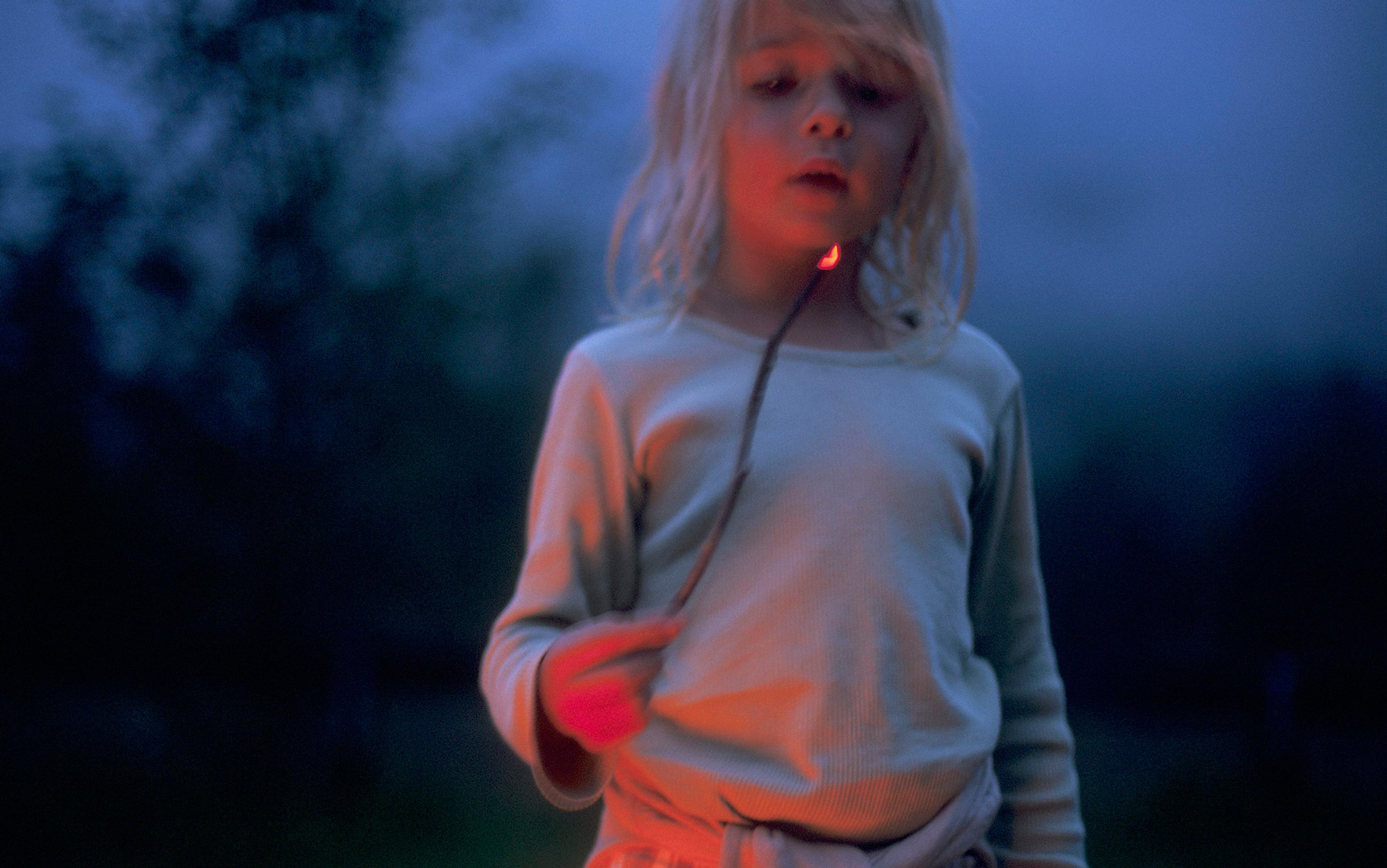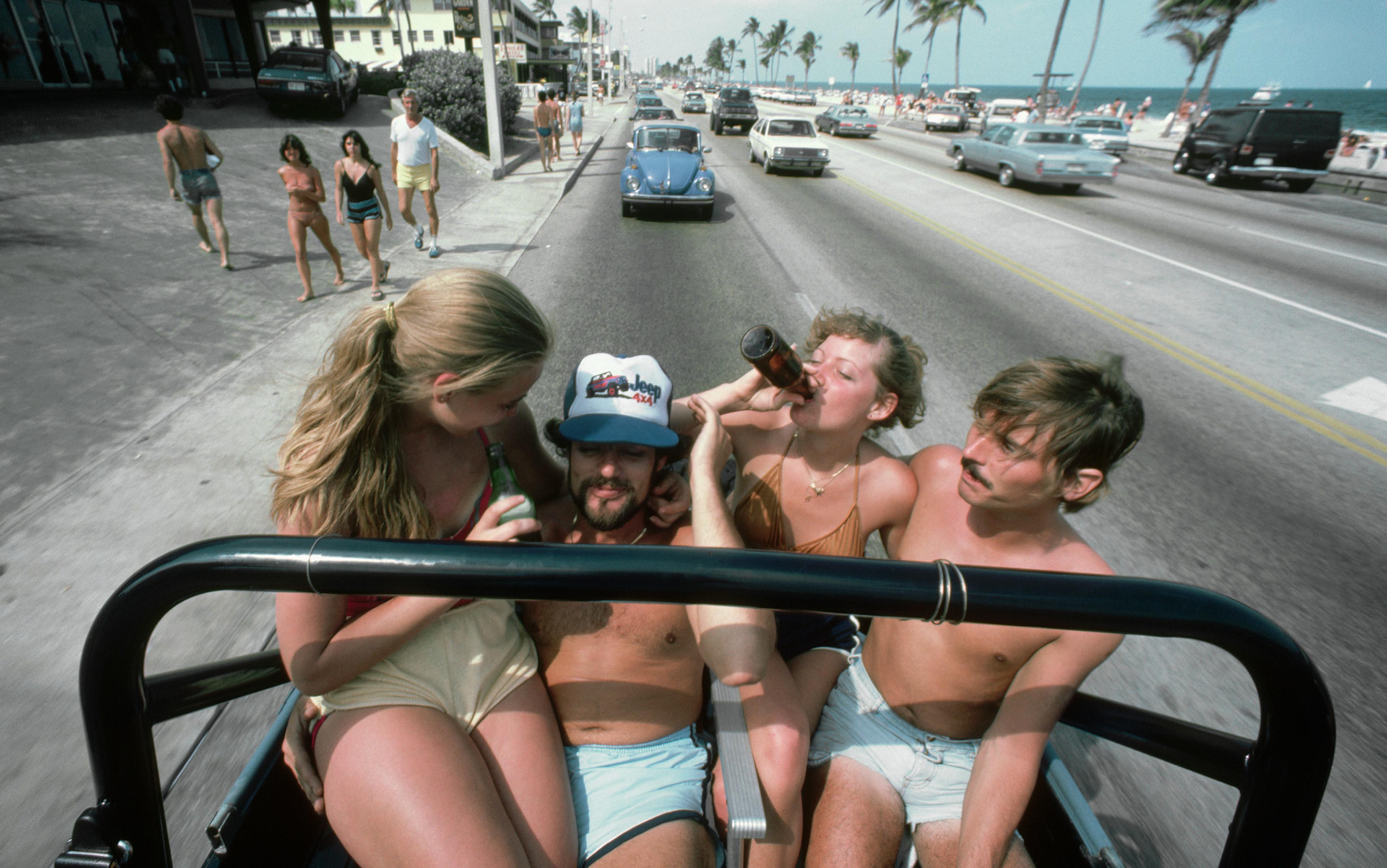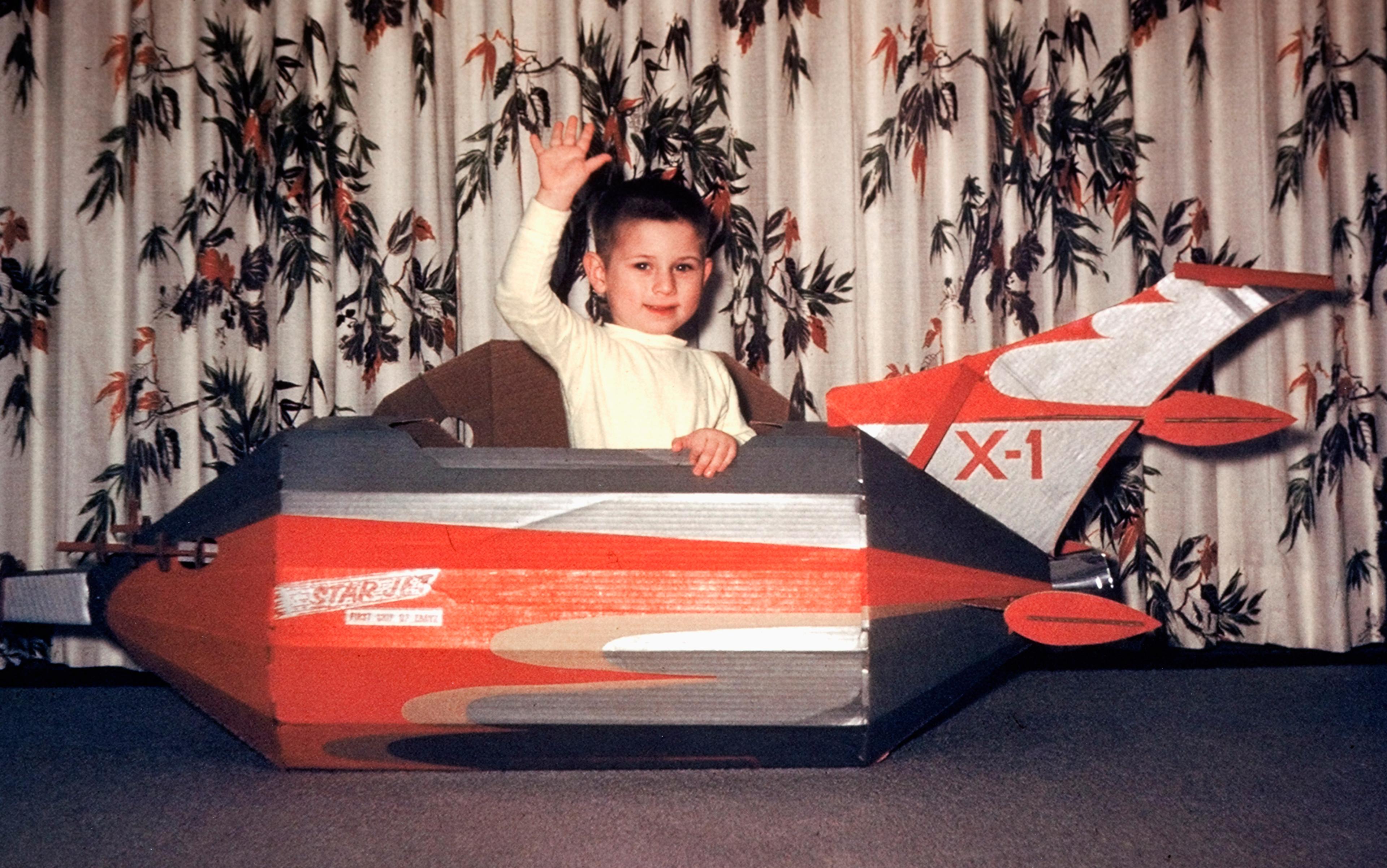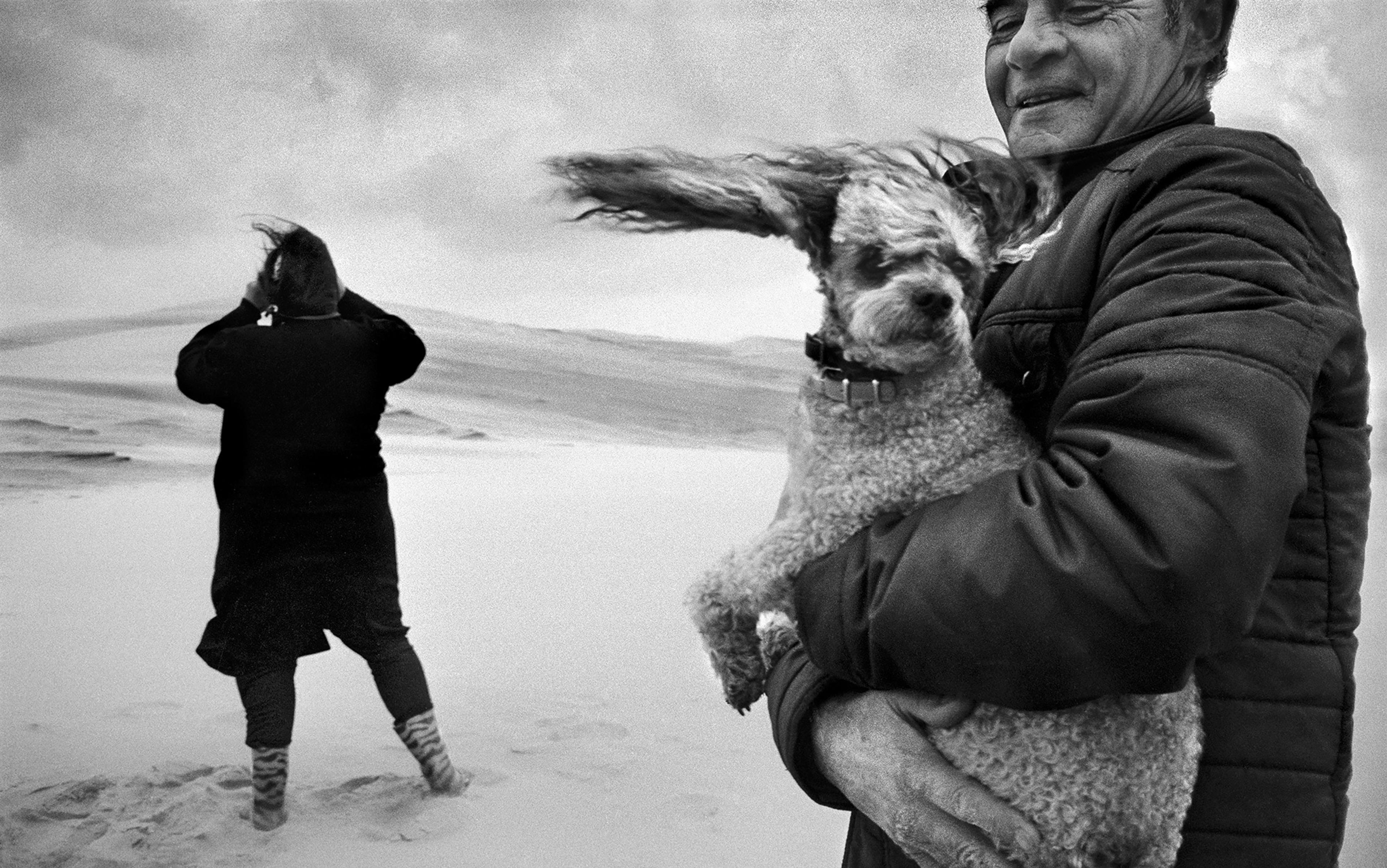It is every parent’s nightmare. The sea wall at Plymouth Hoe is 65ft high and a line of boys, aged from 11 to 15, are leaping off the wall into the aptly named Dead Man’s Cove, each of them egged on by their friends. This is ‘tombstoning’ — the idea is to enter the water feet-first, as upright and rigid as a tombstone. Most of the boys come up proud and unscathed. A few, inevitably, don’t. Tombstoning is as dangerous as it looks — kids often leap into water that has submerged rocks and lethal currents. Around 20 kids have died in the UK the past nine years; nearly 70 have been left paralysed and wheelchair-bound for the rest of their lives, yet tombstoning is more popular every year.
Why do they do it? Watch what happens at the top of the wall and you will see one obvious reason — what is crudely called ‘peer pressure’. Kids urge each other on and are admired for their bravery and ‘cool’. They experience strong — if ephemeral — feelings of solidarity, closeness and respect. Many clips show pretty girls making eyes at the daredevil boys (and sometime vice versa). But it’s not just about peer pressure and social status. When Jez, a tombstoning veteran aged 16, was interviewed by The Guardian in 2006, he explained: ‘You spend the whole day in school doing boring stuff … you still want to do something that will give you a rush … Jumping does that. Just for a second you forget all the boring bits of your day and feel free.’ Steve, 18, said: ‘It’s a way of getting out of your mind for a moment or two without taking drugs or drinking alcohol. When you are out there in mid-air, you don’t think of anything — your head goes clear.’
That desire for ‘your head to go clear’ motivates much of the adolescent behaviour that seems irrational and self-destructive to adults. Aggression and fighting are more about being jerked into the present — and so feeling fully alive — than actually intimidating or injuring other people. Research has found that fights in school are often triggered by boredom, and are most common between friends. Some sports induce the same state of consciousness, as can dancing. Reckless sex has parallels with tombstoning (especially for boys; for girls there could be more complicated motives). So does self-harm. Interviewed for a piece in The Guardian in 2006, one teenage boy said his self-harming was ‘a way to get rid of the hurt, anger and pain. But the rush it gave, the sense of feeling better, was always so short-lived that I had to do it many times.’ A girl said: ‘I was 12 years old when I began, and pretty depressed, angry and isolated. One day, I accidentally hit my hand really hard against my bed and experienced this sudden feeling of relief. Then for some reason I decided to cut myself, to see if I could make the good feelings last longer.’ Drugs and alcohol also shift focus away from a tangled world of regrets and worries and into a present moment where ‘your head goes clear’.
What is it about these kinds of experiences that makes them so compelling, against all reason, for adolescents? It’s not the jumping, the dancing or the having sex per se; it’s the way that they make you feel. I call these intense, powerfully appealing feelings the ABCDE experience. The A is for aliveness: to feel energy, intensity, high-spiritedness — to be rapt in the present moment — as opposed to feeling lethargic, inhibited or self-conscious. The B is for belonging: the feeling of being accepted and valued, of having friendship and intimacy, of feeling ‘at home’ as opposed to feeling isolated or ‘orphaned’, an outsider. The C is for care. Young people want someone and something to care about: mates or a gang, a girlfriend or boyfriend, a baby, the right smart phone, or the right jeans. They hate busywork: being made to do things that seem meaningless or pointless as much of school seems to be. (I like the story of the inner-city schoolboy who was asked by his teachers how many legs a grasshopper had. ‘Oh man,’ he sighed, ‘I wish I had your problems.’)
D is for depth: adolescents are drawn, in many different ways, to difficulty, uncertainty and adventure. They seek challenges to overcome and experiences that will stretch them — but often these are not the challenges that are sanctioned and approved by parents and teachers. Their challenges have to have something ‘real’ about them, and for many youngsters that does not involve reading, writing, explaining things and ‘showing your working’. And the E is ease: a feeling of equanimity, peace of mind and rest, as opposed to insecurity, anxiety and agitation.
So my theory of adolescence is this: the more an activity induces feelings of aliveness, belonging, care, depth and ease, the more drawn to it adolescents will be. The more bereft of these qualities, the more averse they will be.
Actually, it’s not just young people. Don’t we all hanker after such intense experiences, that make us feel all of these things? Here’s a character in Jo Nesbø’s best-seller The Bat (my holiday reading this summer) articulating the aliveness and depth of skydiving in terms that would ring absolutely true for teenage tombstoners:
It starts as a shock, an adrenalin rush through your veins as you leave the plane. Like an injection. Then it mingles with your blood and makes you feel happy and strong… Your body is convinced it is going to die and goes into full alarm mode — opens all its senses to the max to see if any of them can find a way out. Your brain … registers everything: your skin feels the temperature rising as you fall, your ears notice the increase in pressure and you become aware of every furrow and hue in the map below. You can even smell the planet as it comes nearer. And if you can push the mortal fear to the back of your mind, Harry — don’t push it away, just to the back of your mind — for an instant you’re an angel. You’re living a life in 40 seconds.
A big part of growing up, for everyone, involves exploring what it is that makes us feel not only alive and present, but also competent and respected. With luck, we find passions that are legal and worthwhile, and may be spun upward into hobbies and vocations, rather than downward into self-destruction. These don’t have to centre on an adrenalin-filled physical experience. Research by the psychologist Mihaly Csikszentmihalyi, of Claremont Graduate University in California, has shown that gardeners, cooks and heart surgeons can experience rapture — the pleasure of being rapt — of the same kind. So can artists and writers. So can gamers, and those who create the digital worlds they inhabit. Happily, mortal fear turns out not to be necessary — though you can see how it helps. That cherished quality of focus and vitality can come from pushing yourself towards the subtler limits of skill, as well as away from danger.
Astonishingly, it seems that this kind of intense, fully alive experience can also arise in a way that seems unrelated to any particular activity at all. You don’t have to jump off a cliff or out of a plane to get it, nor even become immersed in a difficult recipe or a game of chess. It can arise, quite mysteriously, as you sit in Starbucks or on the 6.35 commuter train to Basingstoke. Here’s a taste of that quotidian experience from a poem by W B Yeats called ‘Vacillation’ (1933).
My fiftieth year had come and gone,
I sat, a solitary man,
In a crowded London shop,
An open book and empty cup
On the marble table-top.
While on the shop and street I gazed,
My body of a sudden blazed;
And, twenty minutes, more or less,
It seemed, so great my happiness,
That I was blessed and could bless.
And here’s an account of an equally unearned gift of an experience by a weary London commuter from 50 years ago:
Vauxhall station on a murky November Friday evening is not the setting one would choose for a revelation of God! … The third-class compartment was full. I cannot remember any particular thought processes which may have led up to the great moment. For a few seconds only (I suppose) the whole compartment was filled with light. I felt caught up into some tremendous sense of being within a loving, triumphant and shining purpose … In a few moments the glory had departed — all but one curious, lingering feeling. I loved everybody in that compartment. It sounds silly now, and indeed I blush to write it, but at that moment I think I would have died for any one of the people in that compartment. I seemed to sense the golden worth in them all.
This second example comes from a book called The Common Experience (1979) edited by John M Cohen and Jean-Francis Phipps. It contains dozens of descriptions of such mysterious, uplifting events culled from the archives of what is now the Religious Experience Research Centre at the University of Wales in Lampeter, which was founded in Oxford in 1969 by the biologist Sir Alister Hardy. Surveys have shown that versions of this experience are reported by more than half the population — they are indeed common — but people tend to keep quiet about them because they don’t know how to talk about them, or are afraid of being thought weird (or both).
Sometimes, but not always, the experiences are accompanied by exotic visions. Common to them all is a release of aliveness, energy and vividness, often expressed through metaphors of brightness or burning. It is, people say, as if a habitual, hardly noticed sense of inhibition, of being dampened, held back or held in, is dispelled, and the body and the senses flood with life. The literature of mystical or spiritual experience continually reminds us that the origin of the word ‘spirit’ is closer to that of a high-spirited child, or a spirited horse, than it is to any kind of anaemic piety. First and foremost, ‘spiritual’ means bursting with exuberant life. There is also that strong sense of belonging: of being at home in a benign universe that is both loving and lovable. Wherever I am feels like ‘my place’; whoever I am with are ‘my people’. When this is the case, attitudes of suspicion or competition are replaced with what appears to be an unforced inclination towards kindliness and care.
We should not impose on all young people a high-church framework of scholastic values that is, for many of them, deadening and uninspiring
In this state, mystery and uncertainty lose their ability to disconcert. The need to be knowledgeable, to find security in opinions and beliefs, is replaced by a feeling for depth and truth — wherever they might lead. Of course, this heightened sense of trust and spontaneity does not involve a complete abandonment of thought. Rather, as the Sufi proverb has it, ‘trust in God — but tether your camel first’. And then, there is a feeling of serenity and ease. Fear, confusion and self-doubt melt away. Spirituality, in this view, holds out the promise that it is possible, though a mixture of grace, insight and effort, to shed some of the mundane anxiety and agitation that Buddhists call dukkha, and to find oneself more often in a state of inner harmony and clarity.
Descriptions of these experiences are couched in glowing language, for those who report them overwhelmingly appraise them as positive and ‘true’. From the outside it is possible — as Sigmund Freud and others have done — to interpret such accounts sceptically or pathologically, but from the inside there is little doubt that something precious, maybe even momentous, has occurred. No longer seen ‘through a glass darkly’, adulterated by a thousand and one irresolvable doubts and anxieties, the world looks nearer, brighter and less foreboding. And though it is hard to try to induce this experiential shift in the laboratory, it is not impossible. Research by the neuroscientist Richard Davidson and colleagues at the University of Wisconsin-Madison has compared the brain scans of average neurotics such as myself with the brain scans of widely acknowledged ‘holy men and women’ such as Buddhist teachers to show a lessening of activity in areas of the frontal lobe of the ‘wise ones’, especially in the left hemisphere, that are concerned with the resolution of inner conflicts. Crudely, my brain needs to dedicate a good proportion of available neural resources to dealing with my motivational tangle of conflicting doubts and desires. Meanwhile, the wise ones don’t seem to have so much mental mess any more, so those neural resources are freed up to serve greater activity in the sensory and motor parts of the brain — hence the bursts of vividness and energy.
I think it is that sense of vivid clarity and presence that the tombstoning teenagers are after. They are after the same quality of experience that the mystics have. They too are trying to leave behind that feeling of foreboding and self-consciousness as they jump from the cliff-top, or race in a car. I had an Italian friend who used to like to ski so fast that he left the scimmia, the malign monkey that habitually sat on his shoulders, behind. I think there is an echo of that loving, easy aliveness deep inside young people. They are trying to leave the scimmia behind. The call is so strong that they are willing to feel intense physical pain, or mortal fear, in order to follow it. The impulse is healthy and wholesome. At some level they know that ‘the common experience’ is theirs by right. They want, quite rightly, to reclaim it, and are willing to pay a high price to do so. Perhaps the difference between them and us is not their immature brains, but their refusal to settle for a life without such highs.
Thus the teenage excesses that perturb us, and sometimes wreak destruction, can be understood as misguided attempts to fulfil a deep, wholesome human urge. Young people long deeply for these vivid and loving experiences in their life — but many don’t know how to do it in a way that is subtle, sociable and productive. The life they are offered by contemporary culture is full of surrogate desires and motives — materialist, sensationalist and sometimes cruel or self-destructive — so their attempts to feel alive, accepted and valuable can become perverted into activities that carry the risk of creating yet more toxic waste in their lives. The harsh behaviour that might be required for acceptance by a gang poisons ever more deeply the loving acceptance of your family or of friends of a different stripe. The un-thought-through desire for a baby — for someone to love and be needed by — can turn out to strangle other possible avenues for a life well lived.
Being able to check your tears or your tantrums once in a while is useful, but when self-control becomes a chronic straitjacket, the person rebels
In The Element: How Finding Your Passion Changes Everything (2009), the educational adviser Sir Ken Robinson argues that it is a core function of education in the 21st century to help students find positive passions and pursuits that will deliver the quality of life they crave. We should not impose on all young people a high-church framework of scholastic values that is, for many of them, deadening and uninspiring. Instead, we should stretch our own values, so that we can help them along on their own journeys of discovery. We need to get better at honouring and channelling these impulses, not condemning them, so that we do not strand adolescents in a world where they are constantly told that what feels good is ‘bad’, and what is ‘good’ involves being studious, sensible and contained. It is true that the ability to ‘self-regulate’ — to concentrate, delay gratification and control our impulses — is a key asset for all of us. It predicts everything from happiness to financial probity. Yet too much of a good thing turns sour. Being able to check your tears or your tantrums once in a while is useful, but when self-control becomes a chronic straitjacket, the person rebels. It is as important to know when and how to let the brakes off as when to apply them.
Adolescents, by and large, don’t get a balanced message from the social arbiters of value around them, such as their schools. So, to use Yeats’s word, they might vacillate between compression and explosion — and that is not good, either for them or for their communities. The less the feeling of aliveness and belonging they have towards their school, the more extreme this vacillation is likely to be. Schools are not just the victims of social forces that lead some of their students to ‘act out’ or become ‘disaffected’. The rigidity and lopsidedness of school values and practices makes a bigger contribution to the difficult behaviour teachers have to deal with than they realise.
So the remedy involves more than talking up team sports and providing opportunities to ‘let off steam’ now and again. For those who are not going to be ‘winners’ at the examination game, or who are not naturally studious, a rigid obsession with cognitive achievement — with test scores and university entrance — denies the chance to explore and develop passions and interests which will channel their aspirations and ideals for a lifetime to come. When schools (and parents) become more elastic and inclusive about the activities they honour and respect, we will all be the beneficiaries. We need to understand more deeply why it is that adolescents behave in odd and perverse ways, and to recognise that they need clear channels through which to honour and express their exuberance, their need for love, and their capacity to care.






